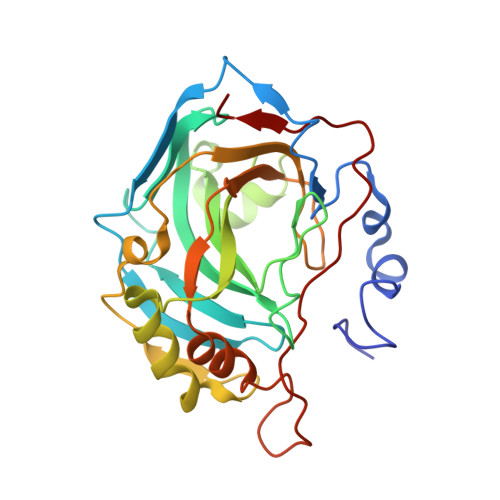Carbonic Anhydrase Inhibitors: Bioreductive Nitro-Containing Sulfonamides with Selectivity for Targeting the Tumor Associated Isoforms IX and XII.
D'Ambrosio, K., Vitale, R.M., Dogne, J.M., Masereel, B., Innocenti, A., Scozzafava, A., De Simone, G., Supuran, C.T.(2008) J Med Chem 51: 3230-3237
- PubMed: 18481843
- DOI: https://doi.org/10.1021/jm800121c
- Primary Citation of Related Structures:
2QP6 - PubMed Abstract:
2-Substituted-5-nitro-benzenesulfonamides incorporating a large variety of secondary/tertiary amines were explored as inhibitors of the zinc enzyme carbonic anhydrase (CA, EC 4.2.1.1), with the aim of designing bioreductive inhibitors targeting the hypoxia overexpressed, tumor-associated isozymes. The compounds were ineffective inhibitors of the cytosolic isoform I, showed a better inhibition of the physiologically relevant CA II (KIs of 8.8-4975 nM), and strongly inhibited the tumor-associated CA IX and XII (KIs of 5.4-653 nM). Some of these compounds showed excellent selectivity ratios for the inhibition of the tumor-associated isozymes over the cytosolic ones (in the range of 10-1395). The X-ray crystal structure of the adduct of hCA II with the lead molecule 2-chloro-5-nitro-benzenesulfonamide as well as molecular modeling studies for interaction with hCA IX afforded a better understanding of factors governing the discrimination of the two isoforms for this type of bioreductive compound targeting specifically hypoxic tumors.
- Istituto di Biostrutture e Bioimmagini-CNR, Napoli, Italy.
Organizational Affiliation:





















